
Sanctuary
At the front of the Altar you will find the image of a pelican feeding its brood, below left - an image repeated on one of the heads of the Choir Stalls, below right.
The pelican was once thought to feed its young with its own blood by pecking its chest - evoking the image of Christ nourishing his people with his blood through the Eucharist.
In the pelican's case, the reality is more unromantic. They regurgitate semi-digested food which their young take from the pouch under their bill.
While the pelican may appear to be wounding itself, it is, in fact, pressing its bill onto its chest to empty its pouch.
The erroneous belief may have been fuelled by the fact that pouches become redder during the breeding season.
The pomegranates seen in the image of St Barbara in the St Joseph Chapel make an appearance in the Sanctuary on the woodwork of the organ and, in addition to the pelican, some of the choir stalls have 'poppy seed' heads.
We came across lions at the west end of the Cathedral and you will also find lions in the Sanctuary.
Each of the six brass Altar Candle Sticks - found on low stone plinths to the rear and on either side of the Altar - are supported on the backs of three lions.

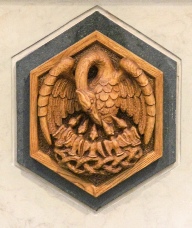
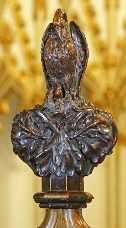
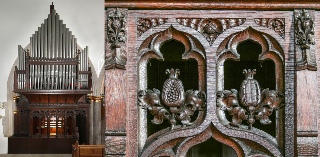

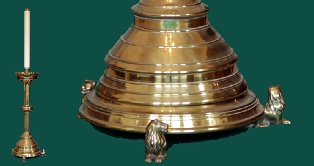




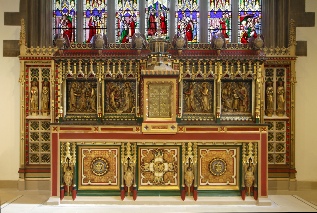
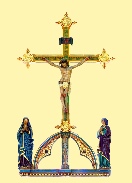



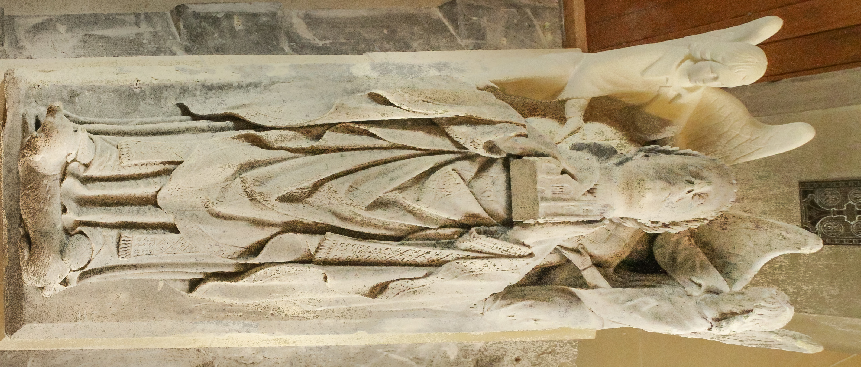
The last piece of nature in the Sanctuary is sleeping peacefully at the feet of Fr Pratt, the priest who inspired the construction of the Cathedral. Fr Pratt's monumental tomb is towards the rear of the Sanctuary on the left and the animal sleeping at his feet is a dog - a traditional symbol of loyalty.
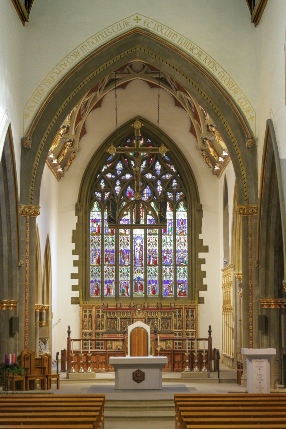
The Sanctuary, next to the St Joseph Chapel, also has a wealth of hidden nature, starting with the roses climbing up the pillars.
Now look at the Rood Cross, the giant crucifix that hangs above the front of the Sanctuary.
At the end of each arm of the crucifix you can see a circular boss, each boss bears one of the Evangelist's symbols - the Winged Lion, the Winged Bull, Eagle and Angel.
Another lion, this time with wings, is on one of symbols on shields carried by four angels on the bottom of the Reredos, the screen at the back of the Sanctuary, where St Marie's High Altar once stood.
The symbols on the shields are the symbols of the four Evangelists, authors of the four Gospels, which tell of Jesus's life and ministry and which are the first books of the New Testament.
The winged lion is the symbol of St Mark and represents the courage and kingship of Jesus Christ, which Mark's Gospel explores.
Two of the other Evangelists also have animal symbols. St Luke's is a winged bull and St John's is an eagle.
The bull symbolises sacrifice, service and strength, while the eagle was thought of as a creature of the sky that could look directly at the sun, representing Jesus's Ascension to Heaven and His divine nature.
The other Evangelist, Matthew, is represented by a winged man or angel, indicating Christ's human nature.
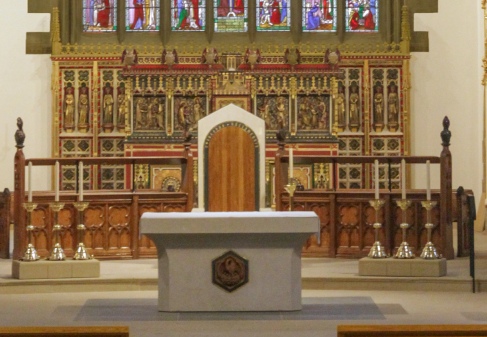
The Evangelists’ Symbols


















